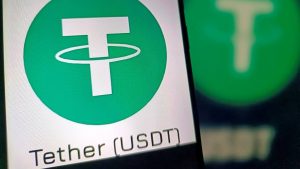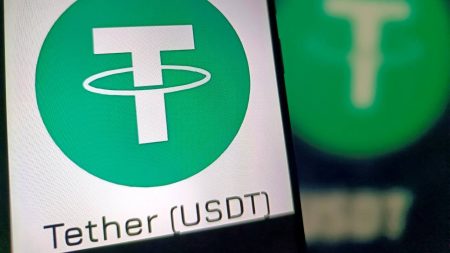The deadline to file your taxes may be closer than you want, but there’s still time for investors to get their tax affairs in order. While filers with investments have to get most of their tax situation sorted before the prior calendar year ends, there are still areas to pay particular attention to and ways to save now.
Here are seven top tax tips that even last-minute filers can take advantage of.
1. Contribute to an IRA
Contributing to a traditional IRA is one of the last, best ways that many working Americans can slash their taxes after the calendar year has ended. Even if you make too much for a tax break on a traditional IRA, you still have the option of a Roth IRA, even if it’s a backdoor Roth IRA. You’ll have until tax day to make your contribution and take advantage of this route.
“Maxing out your investments into your traditional or Roth IRA is a great way to save money for the long term,” says Eric Bronnenkant, head of tax at Edelman Financial Engines.
A traditional IRA can allow you to contribute with pre-tax income, meaning you won’t pay tax on your contributions. The money can grow tax-deferred for years, and only when you take it out in retirement will you owe taxes. A Roth IRA uses after-tax income – meaning no tax break today – but you’ll enjoy tax-free growth on your money and tax-free withdrawals in retirement.
The maximum contribution for an IRA is $7,000 in 2024 and 2025 for those under age 50. Those who are age 50 and older can make an additional $1,000 catch-up contribution.
However, IRAs have income limits, so it’s important to be aware of them. If you make too much to enjoy tax deductibility from a traditional IRA, you may still be able to receive an attractive tax benefit from a Roth IRA. Make too much for even the Roth IRA, and you’ll need to turn to the backdoor Roth IRA, which allows workers to convert an account but not without some catches.
Here are the best brokers for Roth IRAs.
2. Add to your self-employed retirement account
If you run your own business, even a sole proprietorship, you can get tax advantages for contributing to a self-employed retirement plan such as a solo 401(k) or SEP IRA. Both have sizable contribution limits that can help you reduce your tax bill today.
The solo 401(k) works like a regular 401(k), but for single-person businesses. It comes in two variants: a traditional version offering tax-deductible contributions with tax-deferred growth and a Roth version that allows you to grow your money tax-free and withdraw it tax-free in retirement. You can contribute to both a solo 401(k) and a regular IRA, allowing you extra tax benefits.
The SEP IRA is a plan for individuals and small companies, and it functions similarly to a traditional IRA, but with much higher maximum contributions. Contributing to a SEP IRA also doesn’t limit your ability to contribute to a regular IRA, meaning you can get both tax benefits.
The solo 401(k) and SEP IRA have contribution limits, and you’ll need to follow the rules closely. Here are the differences between the solo 401(k) and the SEP IRA and which may be better.
3. Max out that HSA
It’s easy to forget that a health savings account (HSA) gets you a tax deduction, but it can. And you’ll still be building a fund that you can use for medical expenses later on. This option is available only for those who are covered by a high-deductible healthcare plan, though.
“The HSA is triple tax-advantaged, as the contributions are pre-tax, earnings are tax-deferred, and withdrawals for qualified medical expenses are tax-free,” says Bronnenkant.
You’ll have until the tax deadline to contribute, and the HSA contribution limit for an individual is $4,150 in 2024 and $4,300 in 2025. For a family, those limits are $8,300 in 2024 and $8,550 in 2025. Each spouse older than age 55 adds an extra $1,000 to the contribution limit, meaning a family with two spouses over age 55 could contribute up to $10,300 in 2024.
That’s some serious tax savings if you can afford to pack away that much money. Plus, your HSA can be used as an additional retirement plan because withdrawals can be used for any reason after you reach age 65. You will pay taxes on withdrawals used for non-medical expenses, however.
4. Claim capital losses, but don’t get tripped up by wash sales
As you’re reporting any sales of stock or even your home sale, make sure you’re claiming any losses on your return. Capital losses can offset capital gains, ultimately reducing your tax bill. In fact, you can claim a net loss of up to $3,000 on your return, so make sure to report any losses.
As you’re doing so, however, don’t get tripped up by the wash-sale rule. A wash sale occurs when you sell an asset for a loss but have purchased the same asset within 30 days before or after the sale. Wash sales are specifically excluded from being claimed on your return.
If you try to claim a wash sale, the IRS will politely refigure your return and bill you, if necessary.
The loss from a wash sale is not gone forever, though. Once you finally sell the asset and refrain from repurchasing it for 30 days, you can claim the loss and get your tax benefit.
5. Declare your gains and losses from cryptocurrency
If you’re investing in cryptocurrency, not only do you have to declare that you’ve sold or received it in 2024, you also need to report any realized gains, that is, gains from selling a position. But given the volatility in cryptocurrency, investors may have losses, so be sure to claim those, too.
You’re on the hook for any taxable gains from crypto trading, even if you didn’t receive a Form 1099 from your exchange. And while you’re at it, make sure you’re claiming your losses, and get every tax benefit that you’re legally owed. Here’s how to report your gains and losses correctly on your tax filing.
Finally, don’t forget that if you’ve spent cryptocurrency, you could have a gain or loss, too. And according to the law, you could create a tax liability or benefit from that.
6. Watch out for K-1 forms
If you’re invested in a partnership or a publicly traded partnership, you should be receiving a K-1 form that details your tax situation, including whether you’ve received any payouts from the firm.
The K-1 form may be easy to overlook because it’s not a 1099 and, unfortunately, is often delivered late in the tax season. In fact, sometimes it may appear even after the tax deadline. That means if you’ve already filed your return, you’ll have to submit an amended return. That’s not particularly difficult, especially if you’re using tax software, but it can be annoying.
7. Start planning for 2025 taxes
Did you miss the year-end deadline for selling your losing investments and claiming a tax write-off? That’s one of the biggest ways that investors can reduce their taxable income, and if you don’t sell during the 2024 calendar year, you won’t be able to claim them on taxes in 2025.
So, take this opportunity to evaluate whether you need to unload some losing investments now, to reduce your taxes later. While many investors wait until the last month of the year to sell a loser, there’s no legal or tax reason that you need to do so. Plus, you may be able to avoid the inevitable scramble at the end of the year when your life is already too hectic.
Bottom line
Once the calendar year ends, investors have limited ways to really reduce their taxes. However, they do have avenues to make sure that they’re claiming every deduction they’re entitled to. Plus, properly and completely filling out your tax form helps keep the IRS from looking more closely at your return than it already does.
—Bankrate’s Rachel Christian contributed to an update of this article.
Read the full article here















